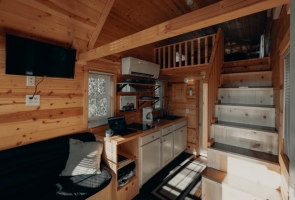While it’s already a huge market in most parts of the U.S. (and the world in general, for that matter), residential rentals are becoming even more common in the new millennium. Renting provides many advantages that millennials, in particular, find appealing.
Today, I would like to have a look at how to successfully market residential rental properties in a way that gets the attention of younger renters. We can deal with other demographics and commercial properties in another post. The bottom line for me, as a content marketing professional, is that it’s important to focus your marketing efforts (and dollars) where the money is. Right now, that’s with older millennials.
The Ideal Renter Avatar
If you haven’t done so already, you really should consider creating an ideal avatar for every area of real estate your company manages. In this instance, you are likely trying to capture leads in some of these categories:
• Single, looking to share space
• Amounts of disposable income
• Renters with student debt
• College or grad students seeking multiple roommates
• Married renters without children
• Married renters with children
• Low-, middle-, or high-income renters
• Urban, suburban, or rural backgrounds
You also want to decide on a list of other attributes of renters to which the properties you broker have the greatest appeal. For help developing an ideal avatar, click here.
Developing Content
Once you know who the focus of your next marketing campaign should be, it’s time to start developing content that your ideal renter will notice and find engaging. For a younger audience, that almost always means centering your marketing efforts around social media. Here are some ideas for the types of content you should be developing and sharing on the various platforms.
Instagram – Whenever possible, use all nine blocks to showcase the same property, even if it’s just a one-room studio. Shoot from every angle and give the viewer a thorough guided tour. Use relevant keywords in your captions and mention why the property would be a good fit for a specific type of renter.
Twitter – Now that Twitter allows longer tweets, take advantage of the opportunity to list properties in a more informative way. Select the best image you have of a given property and write a listing-type tweet about it. You can even split test several images and monetize the ones that get the best engagement. Also, remember to leave about 20 characters for retweets and @mentions. Sometimes, you’ll reach somebody who knows somebody who would love to snatch up a particular property.
YouTube – Get into the habit of creating walking video tours of higher-ticket properties so potential renters can get a better feel of what it’s like to live there. Showcase all the benefits and narrate as you go. This doesn’t have to be polished or professional; just approach it like you’re giving a live tour. Again, use relevant keywords in your descriptions, including longtail keywords that identify the location of the property.
Facebook – Facebook has traditionally been a more integrative platform, so you can be a little more creative with the types of content you use here. By and large, blog content and video will take you far. Do keep in mind that Facebook has always attracted a slightly older demo, but there are plenty of prospects there. In addition, the Power Editor for creating ads will let you pinpoint the exact audience you want for a given property.
Blog Content
Just like with any other business, it is a very good idea to keep a blog as part of your company’s website and update it often. Current SEO trends are rapidly steering away from shorter articles, favoring long-form content over shorter pieces with less valuable information. The most effective blogs are at least 700–800 words, but longer articles (1,500 words and up) will get you further.
You also want to consider writing on topics that are relevant to the average renter that provide helpful tips on how to manage renting, the responsibilities most renters have to a property, etc. Creating and distributing content like that does several things for your brand. For starters, it helps boost SEO, and that is always a good thing. It also shows renters and prospective renters that you’re on their side and have their best interests at heart. Here are a few basic topic ideas:
• 10 Common Mistakes That Can Cause You to Lose Your Security Deposit
• 8 Red Flag Conditions Common to Rental Properties
• How to Land a Great Apartment Without a Credit History
• How to Vet an Apartment Complex or Neighborhood Before Moving in
You can also post on topics that deal with things like simple repairs or dealing with a difficult landlord – all things that many young renters don’t even consider ahead of time. Any experienced real estate copywriting or content marketing professional can help you strategize the best approach.
Keep in mind that these ideas don’t exclusively apply to blogging. You can present content in these areas on most of the other platforms mentioned and get equally good engagement. You can be creative and test the waters on various social media sites, so take full advantage of the opportunity. Eventually, it will become apparent which ones generate the best leads, at which time you can start focusing more of your attention where you find the most leads.
If you feel like you need help getting your content strategy off the ground, the real estate copywriting experts at Beez are here to help. We can look at your business in general and help you zero in on the right potential renters. Contact us today to learn more.




